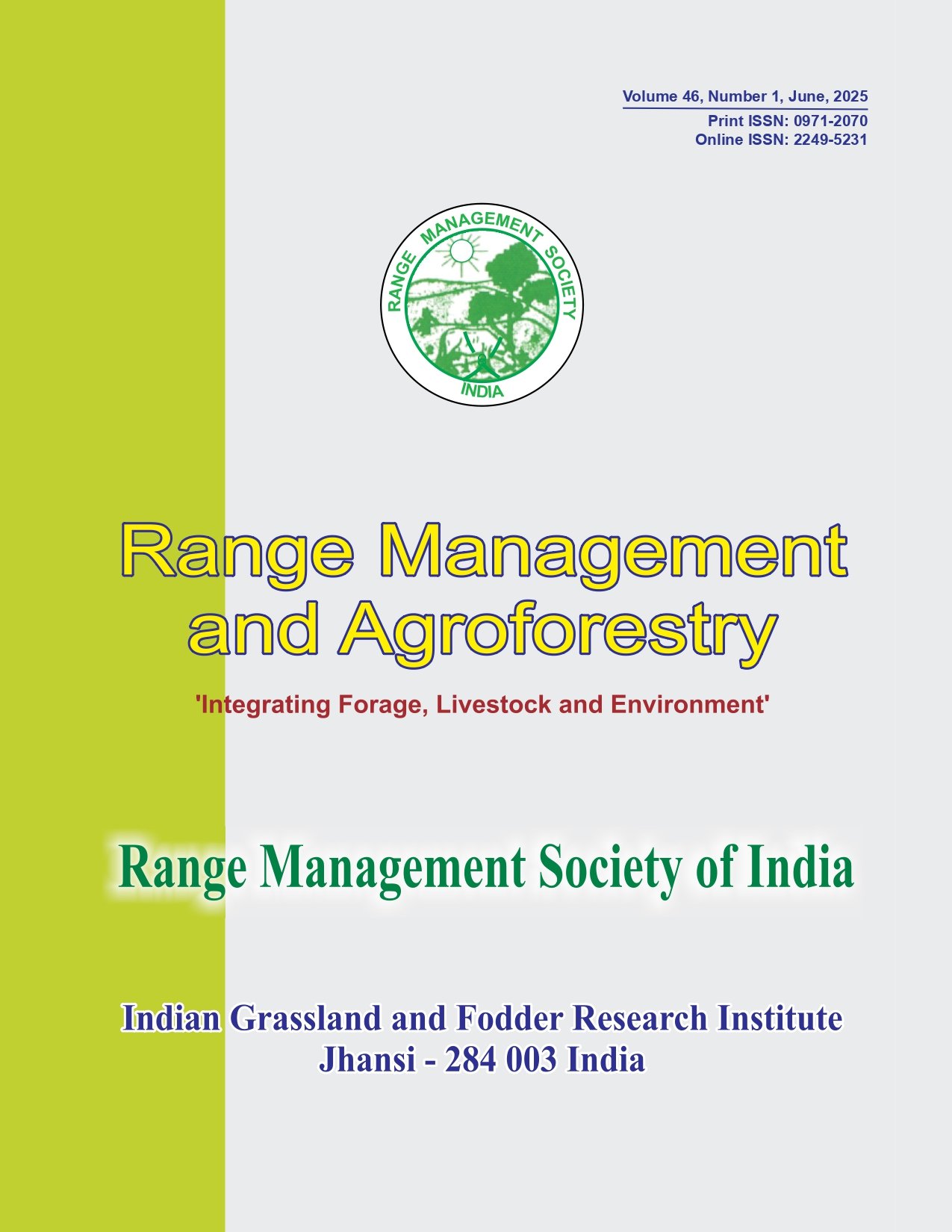Proximate principles and total phenolic content of Melia dubia Cav. leaf varies across altitudinal gradients in South Gujarat
DOI:
https://doi.org/10.59515/rma.2024.v45.i1.18Keywords:
Melia dubia, leaf fodder, proximate principles, phenols, hierarchical clusterAbstract
Five Melia dubia populations were identified through altitudinal gradient (12, 64, 253, 341 and 381 m msl) and four individuals from each population were selected following the selective sampling method through the subjective judgment of the observer. Leaf samples were collected in the winter season of 2020-21 from all the locations. Substantial variations (p <0.05) were recorded in proximate principles and the total phenolic contents in M. dubia leaf fodder along an altitudinal gradient. Crude protein (CP), ether extract (EE) and crude fibre (CF) content were significantly maximum at the highest altitude site (Dinbari; 381 m msl) with values of 10.14, 3.23 and 16.81%, respectively. The maximum ash content (15.68%) was recorded in leaf samples collected from Nanapondha (64 m). Conversely, the highest OM (87.53%) was recorded from Mahal (253 m). Acid in soluble ash was recorded maximum (1.27%) in Mulchond, located at 341 m altitude. Leaf nitrogen-free extract was highest (29.83%) at the lowest altitude (12.00 m), i.e., Navsari population and lowest (57.28%) at the highest altitude of Dinbari (381.00 m). Total phenolic content was maximum [102.28 GAE mg/g (10.22%)] in M. dubia leaf samples of the Navsari population, representing the lowest altitude. The study revealed that most of the proximate principles were higher for populations located at higher altitudes. The hierarchical cluster analysis indicated that among all the five populations, the Dinbari population was found to be more diverse in terms of proximate principles of leaf fodder than others that might be used for further selection and improvement.








